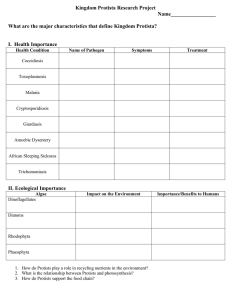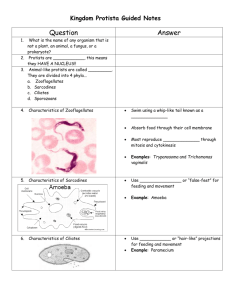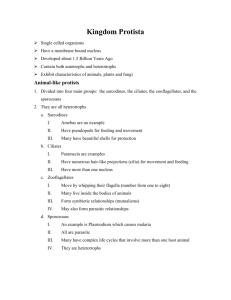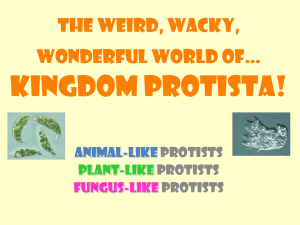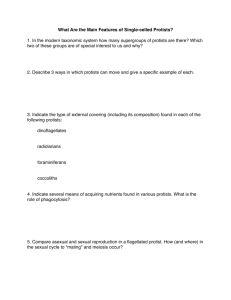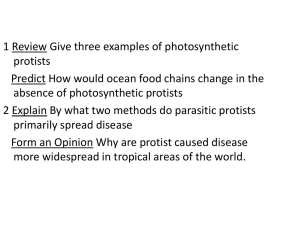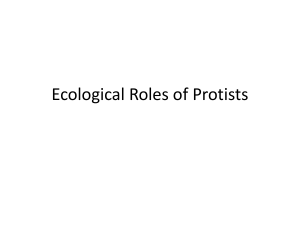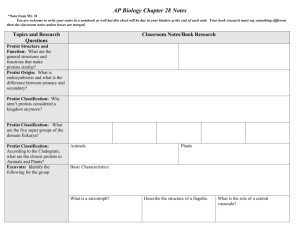Kingdom Protista Kingdom Protista Divided into 3 Subcategories
advertisement
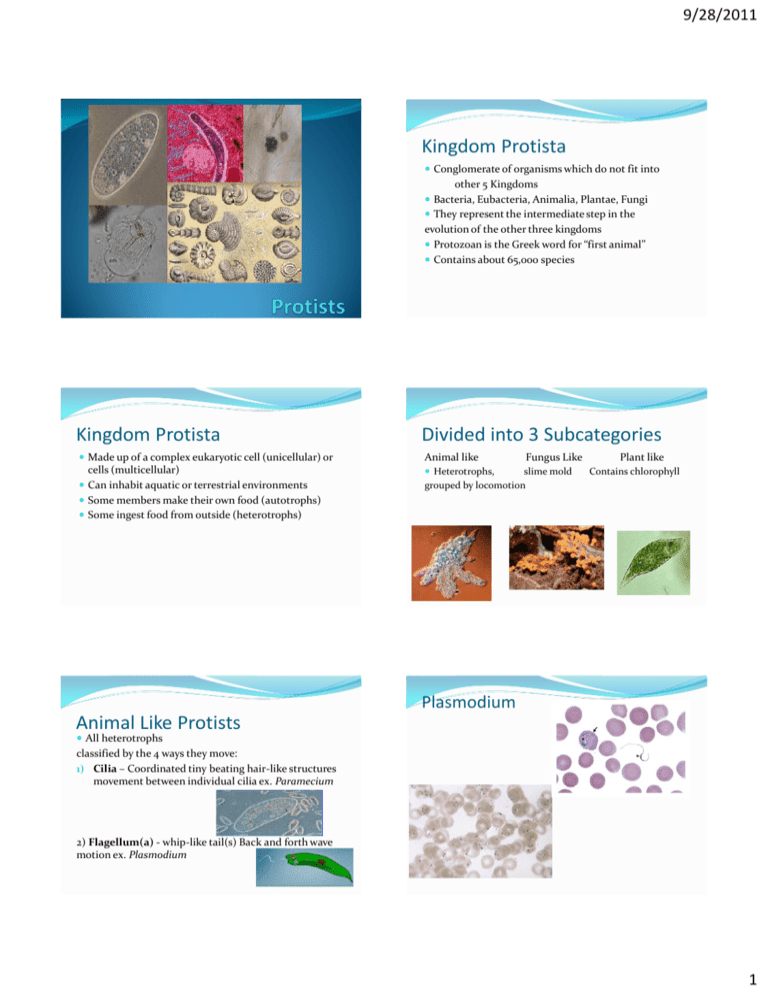
9/28/2011 Kingdom Protista Conglomerate of organisms which do not fit into other 5 Kingdoms Bacteria, Eubacteria, Animalia, Plantae, Fungi They represent the intermediate step in the evolution of the other three kingdoms Protozoan is the Greek word for “first animal” Contains about 65,000 species Kingdom Protista Divided into 3 Subcategories Made up of a complex eukaryotic cell (unicellular) or Animal like cells (multicellular) Can inhabit aquatic or terrestrial environments Some members make their own food (autotrophs) Some ingest food from outside (heterotrophs) Heterotrophs, Fungus Like slime mold grouped by locomotion Plant like Contains chlorophyll Plasmodium Animal Like Protists All heterotrophs classified by the 4 ways they move: 1) Cilia – Coordinated tiny beating hair-like structures movement between individual cilia ex. Paramecium 2) Flagellum(a) - whip-like tail(s) Back and forth wave motion ex. Plasmodium 1 9/28/2011 Characteristics of Sporozoans (Animal-like) 3) Pseudopodia - projection of cytoplasm that sticks out like a foot (“false foot”) Sporozoa do not move on their own protist that reproduce by forming spores mostly common in tropical areas Ex. Amoeba they are usually parasitic sporozoans named Plasmodium causes malaria humans get malaria when bitten by an infected mosquito 4) Sessile - No locomotion (no movement) Page 423 Plant Like Protists Have chlorophyll Make their own food They can live in 4 main environments: 1. Soil 2. tree bark 3. freshwater 4. salt water they produce large amounts of oxygen which are used by other living organisms they are grouped according to color & structure into 5 main groups: Plant Like Protists 1.Red dinoflagellates 3. Diatoms 4. Dinoflagellates 5. Euglena 2. Algae 2 9/28/2011 b)Red Tides caused by Dinoflagellates C) Green Algae Come in many different forms can be unicellular or multicellular they produce O2 in H2O usually found in “colonies” serve as food for fish, snails, and crayfish Colony – a group of cells that live together Fungus Like Protists Slime Molds: •fungus-like protists that are consumers •live in cool, damp places EX: forest floor •feed on bacteria growing on rotting logs and decaying leaves •some are parasites (very few) Fun Work Viruses Page 400-411 (read) Page 405 Q 1,2,3,6 Page 411 1,2,3,6 + Start working on Bacteria and Viruses Assignment Protist Homework: 1 worksheet Common protists on page 420-425 3
